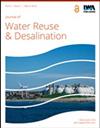察尔汗盐湖真盐杆菌S61的元基因组分析
IF 2.3
Q2 Environmental Science
引用次数: 0
摘要
卡尔汉盐湖是世界第二大盐湖,含有丰富而独特的极端微生物,需要深入勘探。嗜盐微生物由于其灵活性和生存能力,是生物技术的重要资源。本研究首先从察尔汗盐湖分离到一株新的真卤杆菌S61,然后利用第三代PacBio和第二代Illumina技术进行全基因组测序和比较基因组学。H.trueperi S61的全基因组鉴定了57549个读数,由4047887bp的完整环形染色体组成,遗传化合物(GC)含量为43.86%,没有缺口。共预测了139个非编码核糖核酸(RNA)(包括86个tRNA、30个rRNA和23个sRNA)、16个260275bp的基因岛和两个原噬菌体(长度82682)。使用Nr、Swissport、KOG和KEGG数据库对3980、3667、2998和2303个基因用3982个蛋白质编码基因对H.trueperi S61的全基因组进行注释。此外,还鉴定了561个碳水化合物酶和4416个病原体-宿主相互作用相关基因。对H.trueperi S61的蛋白质功能进行了研究,主要集中在基因转录、氨基酸分布以及碳水化合物代谢等生物学过程中。从察尔汗盐湖分离得到的新菌株H.trueperi S61主要偏好蛋白质生物学过程和抗生素耐药性,为生物技术提供了潜在的资源。本文章由计算机程序翻译,如有差异,请以英文原文为准。
Meta-genomic analysis of Halobacillus trueperi S61 isolated from the Qarhan Salt Lake
The Qarhan Salt Lake is the second largest salt lake in the world and contains a rich and unique range of extremophiles requiring in-depth exploration. Halophilic microorganisms are promising resources for biotechnology due to their flexibility and survivability. The present study first isolated a novel strain of Halobacillus trueperi S61 from the Qarhan Salt Lake, then whole-genome sequencing and comparative genomics using third-generation PacBio combined with second-generation Illumina technology were performed. The whole genome of H. trueperi S61 identified 57,549 reads and consists of a complete circular chromosome of 4,047,887 bp with 43.86% genetic compound (GC) content and no gaps. A total of 139 non-coding ribonucleic acids (RNA) (including 86 tRNA, 30 rRNA, and 23 sRNA),16 gene islands with 260, 275 bp, and two prophages (with 82,682 in length) were predicted. The whole genome of H. trueperi S61 was annotated with 3,982 protein-coding genes using the Nr, Swissport, KOG, and KEGG databases for 3,980, 3,667, 2,998, and 2,303 genes. In addition, 561 carbohydrate enzymes and 4,416 pathogen–host interaction-related genes were identified. The protein function of H. trueperi S61 was focused on biological processes with distribution in gene transcription and amino acids as well as carbohydrate metabolism. The novel strain of H. trueperi S61 isolated from the Qarhan Salt Lake primarily preferred protein biological processes and antibiotic resistance, providing a potential resource for biotechnology.
求助全文
通过发布文献求助,成功后即可免费获取论文全文。
去求助
来源期刊

Journal of Water Reuse and Desalination
ENGINEERING, ENVIRONMENTAL-WATER RESOURCES
CiteScore
4.30
自引率
0.00%
发文量
23
审稿时长
16 weeks
期刊介绍:
Journal of Water Reuse and Desalination publishes refereed review articles, theoretical and experimental research papers, new findings and issues of unplanned and planned reuse. The journal welcomes contributions from developing and developed countries.
 求助内容:
求助内容: 应助结果提醒方式:
应助结果提醒方式:


